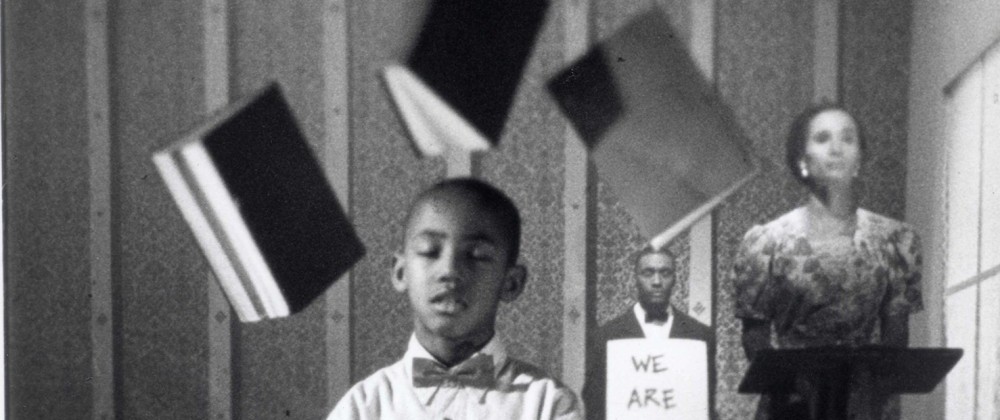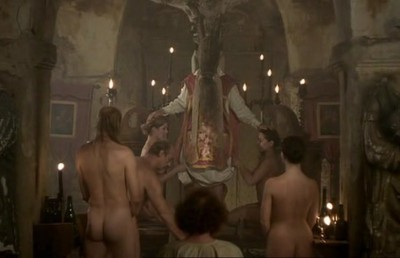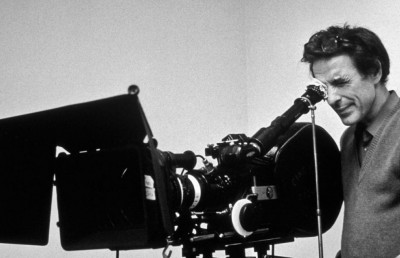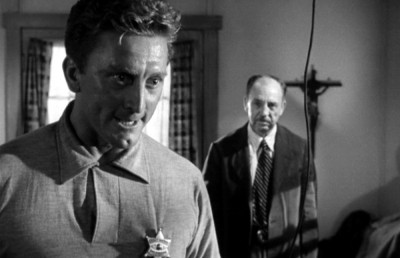The Journey Itself is Home: John Akomfrah’s film meditation on immigration in Britain, The Nine Muses
“You get settled, and then you too become part of the strangeness”

The Nine Muses
Directed by John Akomfrah
Smoking Dog Films/UK Film Council, 2010
Icarus Films
What does it mean to live in a city? Within civilization? What are the liberties and limitations and losses? Those may be the questions that are at the bottom of all modern culture.
The Nine Muses is about history and modernity, city and nature, exile and citizenship, education and ignorance, childhood and maturity, kindness and cruelty: the human condition—the human condition as it relates to the social situations of people of color. The most hopeful sight in the film are scenes of children together, children of every color. If the British had not gone to Africa, Asia, and the West Indies advertising the superiority of British culture, the indigenous people there would not have begun to imagine what life in England might be like, and how much more fulfilling it could be, and they would not have left their homes in search of paradise, says someone in the documentary The Nine Muses. John Akomfrah’s poetic meditation on exile, immigration, and home, The Nine Muses, including classical and modern literature and music, is a work of investigation into the place of people of color in Britain. It is as philosophical and spiritual as it is political, and it is a beautiful and imaginative film.
There are recurring scenes of snowy, mountainous landscapes in The Nine Muses, images that might be a metaphor for a cultural sensibility (the images have something of a silvery blue-green tint—and while acres and acres of white ice and snow are gorgeous to see, they have no welcoming warmth), and there is a large flowing river near the film’s beginning; and we see a solitary standing figure—sometimes in a yellow coat or a blue one, less frequently in a black coat—looking at or walking through the snow, a wanderer and a witness. The scenes of nature and London life are accompanied by the readings of various speakers, past and present, such as John Barrymore and Richard Burton, from the texts of the most eloquent writers; among them, Milton, Homer, Shakespeare, Dante, Beckett, Basho, Tagore, and Nietzsche. The documentary uses archival and new footage, including black-and-white footage of black workers, some working at a furnace, and in a restaurant, laundries, a hospital; and of individuals and families at leisure, drinking in a bar, at the beach, dancing, and strolling in the city. There are also scenes—some in color, some in black-and-white—of East Indians arriving in the United Kingdom, visiting each other, and of East Indian women and girls in a classroom learning the English language and cultural norms, of an Indian man working with live chickens, and other Indian men working in a foundry, and contemporary communal dances. Obviously, these are people who just want to live a good life, and are willing to work for it. It is sad to think that anyone would need to make a case for that.
Who are you, and how will you live? That is the inevitable question of anyone who finds himself in a new place. Will you change to fit the new culture, or attempt to change the culture to fit yourself? “Why aren’t we like Englishmen?” “Why are we so like Englishmen?” The tensions involved in adapting to a new place and creating a life are not only felt by immigrants but by natives who find themselves with neighbors of strange habits and tastes competing for schooling and work. Resentment in England against immigrants has erupted at different times; and in Akomfrah’s film, someone says, “England is not big enough for all the niggers who are coming.”
Stories bring knowledge and pleasure, creating temptations, teaching lessons. The film, with its classical allusions, pays tribute to The Nine Muses of memory, the muses of stories, art, science, and the heart: Mnemosyne, the goddess of memory, couples with Zeus, and gives birth to nine muses, the goddesses Calliope (epic poetry), Clio (history), Polyhymnia (sacred poetry, epic song), Melpomene (tragedy), Euterpe (lyric poetry, music), Urania (astronomy), Thalia (comedy), Erato (love), and Terpsichore (dance). The film includes lines about the Greek warrior Odysseus being away from his home in Ithaca after the sacking of Troy, and his wife Penelope receiving the attentions of other men, who hope to be king in his place, to his son Telemachus’s irritation; and with the help of Athena, the son of Odysseus travels by ship to find his father, the foundation of his home. Odysseus on his return has been slowed in one place and another by African lotus-eaters, a one-eyed giant, cannibals, a sorceress, dangerous sirens who entrance men’s ears and minds and bodies, and other supernatural beings, before being helped by a princess and the goddess Athena. Telemachus is met by Menelaus; and subsequently meets his father, looking like a beggar, back in Ithaca. In The Nine Muses, we see blacks getting off a ship—and then a white woman turning away when she sees her father approach as she talks to a black man, and then black kids on a beach, and a black man in a room writing biographical lines about his own alienation, feeling as if his body is no longer his own. Those scenes occur under the signs of Calliope and Clio, epic poetry and history. Someone, a black man, with a wife and child, talks about his youthful, mythical impressions of England, and of wanting to earn enough money to go back to where he came from.
The East Indians in the film are bearers of an old and distinct culture, and some of them announce that in the way they dress (the saris for the women, the turbans for the men) and in their food and music. Many of them worship different gods. Much of their immigrant stories are told under the signs of Melpomene and Euterpe, tragedy and music; and the film viewer hears verses about fatal siren songs. What is to become of them? Often what happens in a city occurs on a large scale among hundreds of thousands of people, among millions—whether it is housing, transportation, work or school. It is easy to be lost in a city. Fire and water moves quickly through the human grid, burning through a row of houses, flooding streets. Maintaining an inherited culture is one way of feeling grounded—but it can make an individual or a community a bright target.
What does it mean to live in a city? “You get settled, and then you too become part of the strangeness,” one man says. Of course, the past is not easily given up—and the past, present, and even aspects of the future can exist at once: we see a horse and buggy on a modern city street, near automobiles; and then a bicycle being turned onto a street. Children, in class, at a town fair, on the street, are carriers of the past, present, and future. Some immigrants begin to express themselves and excel—in school, in sports, in music, welcomed by some native citizens and rejected by others.
The Nine Muses looks at modern life, from a different angle, that of immigrants of color, with reference to the literature and philosophy of the ages; and it could be the story of any people, from ancient times to today. Ideas of human connection—such as universality and multiculturalism, or even democracy and community—are made real when they are inclusive rather than exclusive, when they are broad and generous, rather than small and petty, and understanding and even forgiving rather than punishing; and the documentary brings forth another chapter in the history of human aspiration, the quest for fulfillment and the finding of a true home.
For decades now we have been introduced to books, films, music, and other arts exemplifying eccentric perspectives from obscure places; and instead of comparing and contrasting experiences, facts, and ideas, and gaining wisdom regarding what we have in common, and clarifying what virtue is, frequently we have become more convinced of our differences, and have made excuses for cruelty, ignorance, and the narrow view. Yet, major works articulate and account for the central experiences, the largest span of experiences, in a culture, and do not lose sight of ideals, whereas minor works only can sound marginal perspectives, and encourage grievance, lassitude, and sensation; but with The Nine Muses, John Akomfrah proves himself brave and imaginative enough to place the experience of people of color amid some of the greatest experiences and thoughts ever declared.
John Akomfrah’s other films—packaged neatly with The Nine Muses home release (DVD) set from Icarus Films—include Seven Songs for Malcolm X (1993), about the life and death of the political and religious leader, and The Last Angel of History (1995), about futurism, including the visions of musicians such as Sun Ra, Lee Perry, and George Clinton, and the science-fiction literature of Samuel Delany and Octavia Butler, and speculations about black identity, past, present in the computer age, and future. The Malcolm X film is strong thanks to the footage of Malcolm X himself speaking. His story is famous: Malcolm Little, the son of parents with political awareness, was a good student discouraged from being a lawyer due to his ethnicity, and as a young man turned to criminality, and was saved in jail by a conversion to the Muslim religion led by Elijah Muhammad, offering a uniquely African-American mythology in which white people are devils. Malcolm X became the public face of the group, articulating with brutal honesty the real nature of American politics, with its centuries of discrimination, exploitation, and violence, and he enlarged the religious group’s membership. His realism was admirable, and his blend of fact with interpretation attractive to many, but his vision was more than anything about the past and the present—whereas, Martin Luther King Jr. articulated a dream of political progress and social integration beginning in the present and moving long into the future; and Martin Luther King Jr. did practical and significant political work—he did not just talk, or encourage people to do the obvious, such as giving up drink and drugs and bad diets. Malcolm X, an amusing and invigorating speaker, would become disenchanted with Elijah Muhammad—finding out about the leader’s fathering the children of his secretaries. (It is hard not to wonder if the puritanism of religion inflames sexual desire, when it does not dull it completely. Certainly, there seem to be constant scandals, in every age, involving the sexual deviance of religious people.) When Malcolm X went on a hajj to Mecca, he learned during his travel that men from different cultures and places could come together, and that his idolization of Elijah Muhammad was considered a great, punishable sin, the creation of an idol that brought spiritual betrayal to others. Malcolm was in the midst of personal and political change at the time of his death, becoming more humane, more international—and that is the most tragic aspect of his death.
The Last Angel of History includes interviews with a range of artists, critics, and thinkers, some of whom I admire, such as Samuel Delany, Octavia Butler, and George Clinton. The sometimes vivid work uses slavery as a significant interpretative fact regarding black identity, and presents music—including jazz, funk, and techno—and imaginings of the future as liberating. There is no doubt raised as to whether much of this is sheer escapism and vanity, more questionable idolatry, as the work of transforming the world is hard, involving the efforts of mind, spirit, and body. To transform, or help transform, the world, you have to think clearly and well. You have to convince other people of your ideas. You have to raise money. You have to build and maintain structures. You have to organize populations. There are people—artists, intellectuals, politicians, social workers—who actually contend with the world as it is, and put forth works that address it, offering intelligent, sensitive attitudes and ideas and solutions; people who are respectable and understandable, sometimes working alone but often working in businesses and organizations—people who do not pose as freaks or conjure fantastical worlds to signify freedom.
(In addition to seeing ordinary citizens involved in activism, business, and charities, I would rather see documentaries on people who exercised liberty, creating futures for themselves and foundations for others: W.E.B. DuBois, Alain Locke, Louis Armstrong, Duke Ellington, Lena Horne, Richard Wright, Zora Neale Hurston, Dizzy Gillespie, Martin Luther King Jr., James Baldwin, Ralph Ellison, Lorraine Hansberry, Sidney Poitier, Diahann Carroll, Bayard Rustin, Abbey Lincoln, Betty Carter, Smokey Robinson, Diana Ross, Stevie Wonder, Curtis Mayfield, Toni Morrison, Denzel Washington, Angela Bassett, Halle Berry, Will Smith, Percival Everett, Cassandra Wilson, and Don Byron. Those are not merely mainstream or popular figures but major figures of accomplishment, of craft, ideas, personality, principle, and significance, people whose work has lasted and will last.)
Some of The Last Angel of History, like some of Seven Songs for Malcolm X, is interesting—and some of it is not; and both films I suspect John Akomfrah made to acknowledge people he regards highly and to give black Brits models of cultural participation and expression. I think Akomfrah, who has a fondness for men who pose, wanted to write about people who seemed cool to him and his friends. The Nine Muses is a more much intellectual, mature, and serious work, more far-reaching and visionary.
Every child is born with great potential, but not every child gets the nourishment and guidance she or he needs: it takes a village of family, friends, teachers, mentors, and colleagues to rear a child—but the most expansive lives are possible only in cities. What does it mean to live in a city, within that kind of civilization? What are the liberties and limitations and losses? Cities, with their large populations and vast resources, and their plentitude of cultures, make it easier for individuals to create themselves and their lives. The competition there is fierce, and the inspiration is sublime, as are the disappointments and rewards. You can win or lose everything.
If you are doubtful, insecure, it is likely that you will spend a great amount of time asserting yourself, establishing reasons for pride; however, if you are confident, it is likely that you will spend time doing things that you find significant and which bring delight. For instance, if someone does not think you are intelligent or literary, you may want to prove you are, rather than doing things that may be intelligent and literary but which have some other purpose. You can get stuck on a mundane, provincial level, proving things that really do not require proof.
Whereas John Akomfrah’s Seven Songs for Malcolm X and The Last Angel of History may be considered assertions of black identity, proofs of pride, they do not illuminate much (only days after seeing Last Angel, it was difficult for me to remember its content—I was bored), but Akomfrah’s Nine Muses is a genuine and deep statement of humanity.
One thing that I like about The Nine Muses, a work of imagery and spoken words of personal and literary expression more than of analysis, a film illuminating the confusions of travel and the torments of exile, is that the film could be about immigrant experience anywhere—that of the Italians and Irish in America or of Arab Muslims in France or Germany, people who need new opportunity and move to a foreign culture, encounter prejudice and suspicion, and work hard to make new lives. The documentary, a string of images connected by theme, conversation, poetry, music, and certain motifs—snow, city streets, people at work, and the faces of children—allows for a variety of experiences, for sadness here and satisfaction there. The focus is on people of color, on black and brown people, but what is described is really a timeless experience, not bound by color or country; and its cultural references, from the Epic of Gilgamesh to the poetry Emily Dickinson and T.S. Eliot, as well as the thoughts of ordinary people, indicate a liberation of mind.
Article submitted August 2012













